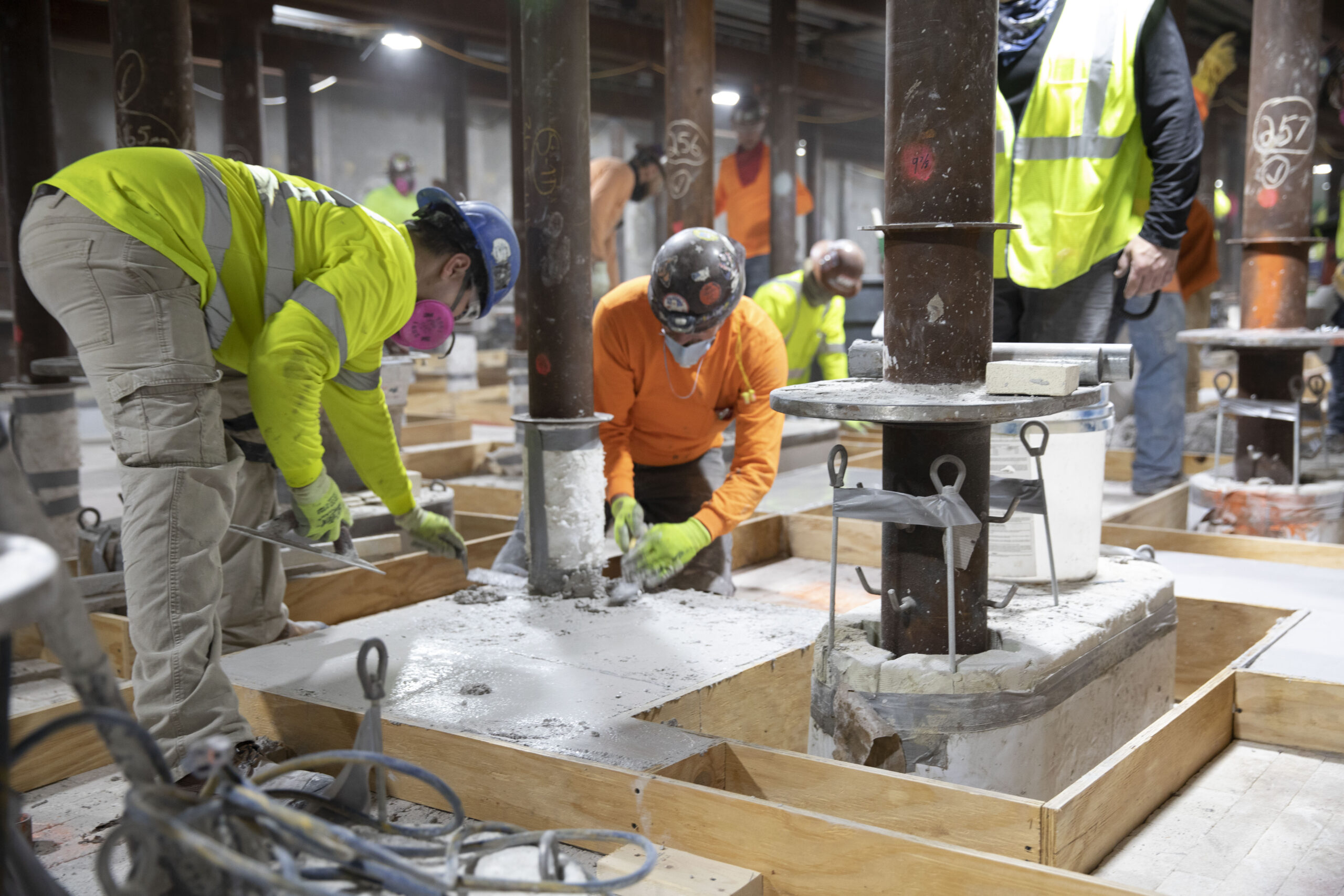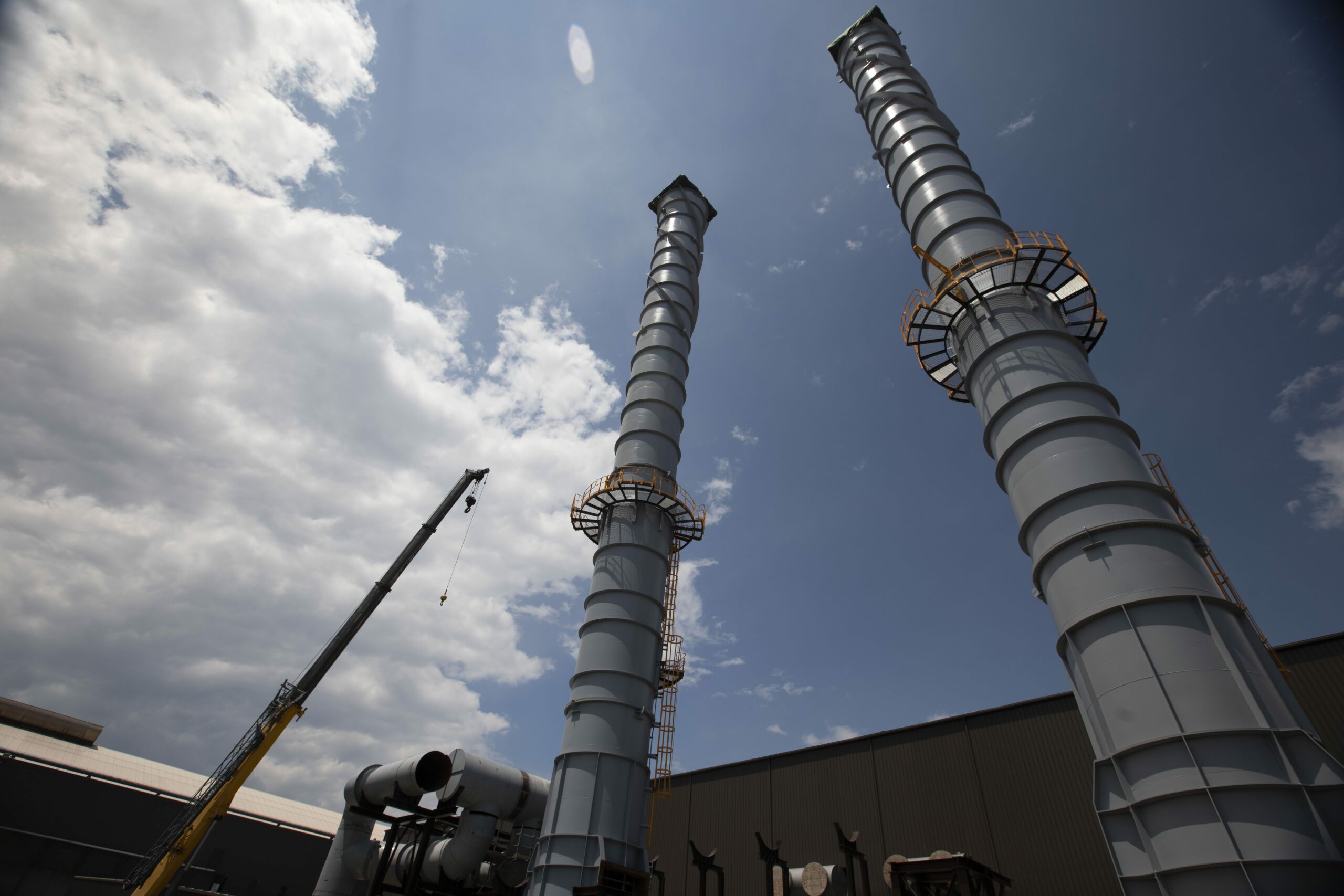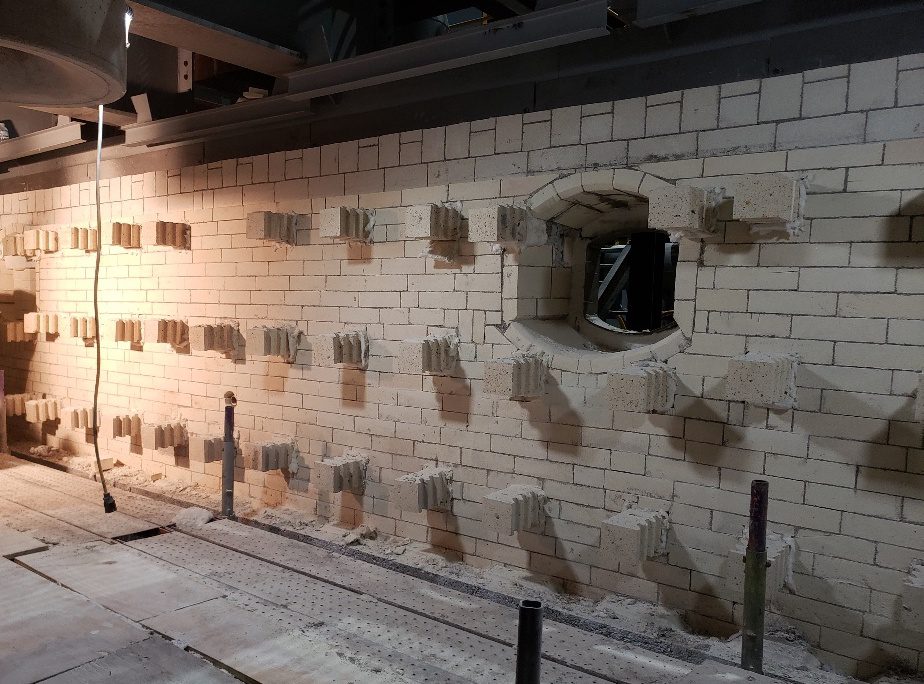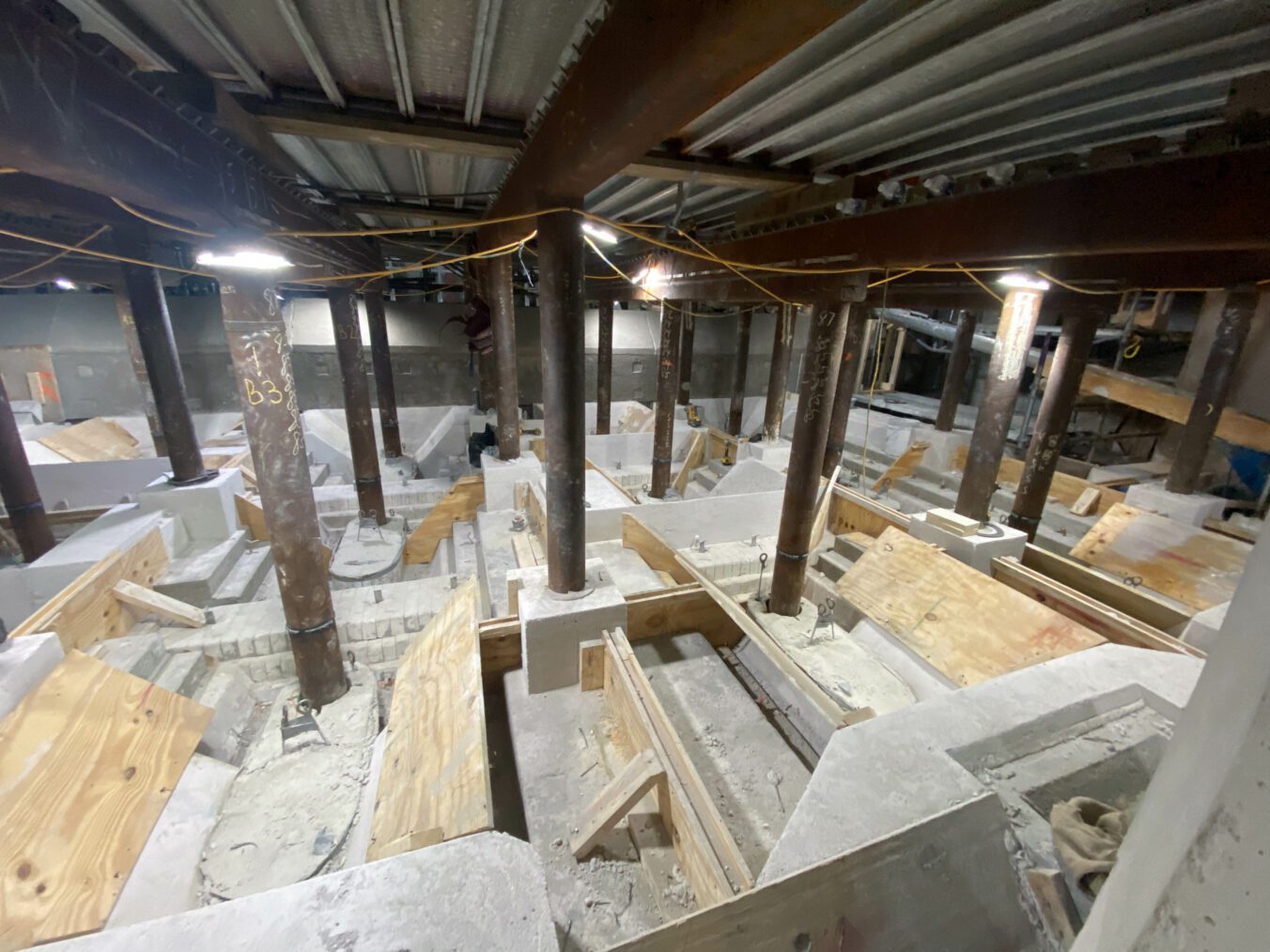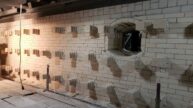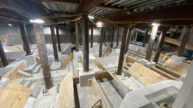It’s not every year that brand new walking beam furnaces are built. In fact, the two new walking beam furnaces – Nos. 4 and 5 – at an Indiana facility are the first new reheat furnaces built in the U.S. in nearly a decade. Barton Malow is well-known in the refractory business for providing high quality maintenance for the largest steel companies in the country, and we stepped up again for the installation of the refractory for two new walking beam furnaces, arriving on site ready to overcome some of the largest industrial challenges.
The furnace proper is 210-ft in length and 40-ft in width. The two furnaces weigh a combined 2,670 tons (including skids and posts, without refractory). Each furnace has two waste gas ducts and one 217-ft stack. The two ducts are located on each side of the charge end, allowing gases to flow through the heat recuperator and out the stack. These world-class furnaces will produce 500 tons of steel per hour, an increase from existing pusher furnaces only capable of 300 tons per hour, representing a 40% increase in productivity for client.
Refractory Materials
Barton Malow self-performed the refractory installation throughout these state-of-the-art walking beam furnaces. The team also handled getting refractory materials to the site and stored, allowing further control and coordination throughout the project. At the peak of work, 165 craft members were on site, including bricklayers, carpenters, laborers and operators, racking up 190,000-plus hours worked.
Various refractory materials, holding temperatures above 900 degrees Fahrenheit, were used throughout the furnaces. The refractory work required for this project was detailed and labor-intensive. The average person looking at completed refractory work will not realize that multiple layers of different refractory materials are required to keep furnaces protected and working efficiently. These refractory layers may consist of a combination of insulation board, refractory bricks, castable, and gunite.
Each type of refractory within the furnace serves a different purpose. Insulating fiberboards or blankets hold heat in the furnace and away from the shell. Firebricks, light like Styrofoam but made to withstand high temperatures, are layered in a uniform pattern. Castable and gunite are used to line the furnaces, allowing for higher exhaust temperatures and protecting concrete and steel surfaces from high temperatures. Castable is mixed in a paddle-type mixer, dumped into wheelbarrows and vibrated into place in the hearth and roof areas. The water is mixed early on in the process to become a more uniform material. Gunite is applied by a special machine that uses air to push the dry gunite through a hose and to the target. Unlike castables, water is added at the nozzle to moisten the dry mix so it sticks to the surface.
Our Quality team was an integral part of recognizing and overcoming one of the biggest challenges the project team would face. When Barton Malow’s Refractory team performed QA testing onsite, it discovered the castable material was not capable of being pumped due to its density. This castable material is unique for the United States, as the material was provided by a European supplier who could utilize a special pump to cast the particular density. This posed a challenge for the team, impacting manpower, time, and logistics, to have to hand cast the castable throughout the furnace. At peak, the team was hand casting approximately 30 tons of material a day.
Unique to the design of these new furnaces is the incorporation of expansion joints, which are not seen in existing furnaces. The addition of expansion joints allows for easier maintenance in the future. However, these expansion joints required the team to place the material in four segments versus two, resulting in additional strategic and intricate work by the team.
Due to the location of the facility, we gained the advantage of the extremely skilled tradespeople in the region. The bricklayers from the area are as talented as they come. We tapped our own skilled workforce of carpenters to craft the sizable amount of formwork. With changes that occurred on site, our carpenters were added and saved the day. Carpenters improved tight schedule requirements by using prefabricated walker slot forms that were fabricated off-site. The world-class craftsmanship of the bricklayers, carpenters, laborers, and operators is what made this project a success and even earned the International Union of Bricklayers and Allied Craftworkers (BAC) the 2022 BAC Craft Award for Best Refractory Project..
Production Tracking
True to Barton Malow’s innovative spirit, productivity tracking became an important factor to ensure the project was finished on time. The goal of productivity tracking was to gain a better understanding of what different materials were being installed and what quantities had been installed up to that point in the project. Beginning this tracking process came with some additional challenges:
- Materials had the same identifying number and material type but had different densities. We found the only way to differentiate was the position number.
- We had to convert all weights from metric to U.S. measurements, with density resulting in an additional challenge.
- The drawings calibration seemed to have a delta in areas when scaling in Bluebeam.
- The overall level of detail was not easy to define by looking at the drawings. Section and details pages had to be studied extensively to understand where the materials changed in types and thickness.
After completing the takeoff and understanding the quantities installed as of November 2020, we were able to start tracking productivity. Tracking sheets were issued to the foremen of each crew and they recorded what areas they worked in and how many bags (castable, gunite), square feet (board, insulation), or totals (brick, modules, tile) were installed daily. At the end of each day, the amounts of each were converted to the respective U.S. measurement weights (tons) and the installed quantities were recorded to track material productivity.
Material
Gunite
Castable
Brick + Board
Pipe Shapes
Installation Rate
0.0286 ton/hour
0.0367 ton/hour
0.0064 ton/hour
2.17 each/hour
Total Installed
820 tons
2,150 tons
830 tons
19,600 each
Perseverance through the Pandemic
Like most things in 2020, COVID-19 added challenges to this one-of-kind project. The extensive workforce on site called for unprecedented safety procedures. Barton Malow brought an Industrial Hygienist on board to safeguard the well-being of everyone on site and to assist with mask requirements, entry procedures, and effective social distancing.
Additional trailers and tents were brought on site to allow team members to properly social distance while on breaks. Before shifts began, all individuals on site had to complete a questionnaire and have their temperature taken. As the virus evolved, mask standards increased requiring only N95 masks to be worn on site. Additionally, HEPA filters were added to trailers to improve indoor air quality and filter out potentially dangerous particles. While tackling a global pandemic was not on our list of items to overcome, team members showed that perseverance and resilience make a difference.
Embracing Challenge for Growth
Barton Malow is no stranger to steel mills or refractory work. However, self-performing the refractory installation throughout the new walking beam furnaces offered Barton Malow a one-of-a-kind opportunity. The team was able to provide quality work despite facing challenges with the castable material and COVID-19. The completion of this project is a true testament to Barton Malow’s best-in-class craftsmanship and the team’s ability to pivot and adapt. This project further proved how the team is committed to its core purpose of building with the American spirit: People, Projects, and Communities.
